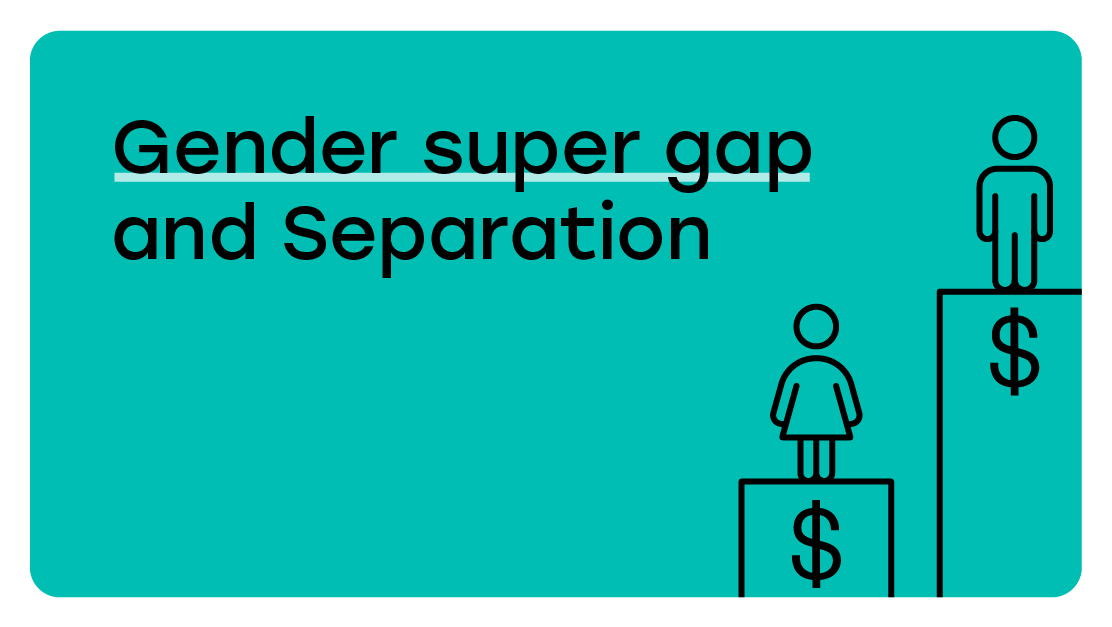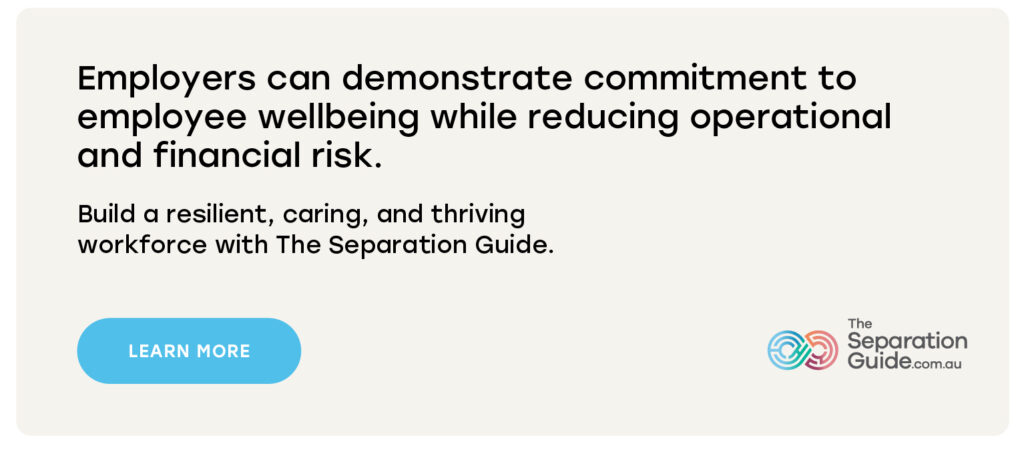Superannuation splitting is a major pain point within the divorce sector. While most joint assets are straightforward, because super is held in a trust, it can be trickier to navigate.
In Australia, the current process is overly bureaucratic and lacks uniformity across superannuation funds, which can lead to unnecessary delays and costs for separating couples. Add in issues around family violence and the gender pay lens, and the facts are undeniable: super splitting is a practice rife with challenges that can impact people long-term, especially women.
This presents an opportunity to review how the super sector is managing its corporate social responsibility (CSR) and environmental and social governance (ESG) goals and delivering on their mandates to protect the future wealth of everyone upon retirement.
In this article, we will delve into the intricacies of the super splitting process, explore the challenges faced by clients and lawyers, and determine potential solutions to streamline and improve the system.
What is super splitting?
Super splitting is the practice of dividing up superannuation assets upon the breakdown of a marriage or de facto relationship. While not mandatory, it is recognised as an equitable way of dividing assets, especially when one person in a partnership has accrued substantially less super than the other due to the gender pay gap, caretaking responsibilities, or other social factors.
It’s important to note that super splitting does not convert the gained superannuation to a cash asset – it is still subject to the same laws that govern all superannuation, including the age and circumstances under which it can be accessed.
What is the standard practice for super splitting?
The standard practice for super splitting involves several steps:
Step 1 – Agreement formation: The separating couple agrees on the superannuation split through DIY arrangements, mediation, or independent legal advice.
Step 2 – Engagement of a lawyer: The client engages a lawyer to formalise the agreement in writing.
Step 3 – Procedural fairness: The lawyer writes to the super fund, providing a copy of the agreement and seeking procedural fairness.
Step 4 – Issue of a court order: If the court considers the agreement as a whole (including the superannuation split) is just and equitable, the order will be issued.
Step 5 – Paperwork sent to the super fund: After the court order is issued, release forms and a copy of the court order must be signed and certified and provided to the superannuation fund.
Step 6 – Release of funds: The super fund can then transfer the funds to the relevant party or parties.
This is a 90-day process from start to finish at best, but in many cases, can become lengthier.
What are the inefficiencies in the current superannuation splitting process?
The current super splitting process is full of inefficiencies – here is a snapshot of the most pressing issues.
No standardisation across super funds
Currently, the forms used to approve and process super splitting orders vary greatly from fund to fund. This leads to a high initial rejection rate, wherein only 30% of initial drafts are accepted – the remainder of the time, the super fund will write back with amendments to the order.
Each super fund also has its own preferences and nuances in drafting and processes, which can lead to further delays and confusion.
Significant time outlay
Super funds have 28 days to respond to lawyers when the order is first presented. If amendments to the order are required, the lawyers must then resubmit the order, giving the super fund another 28 days to respond. This can become a roundabout, time-consuming process.
Additional legal fees
This back and forth of paperwork almost always results in higher legal fees for clients. Current super fund processes are costing our society an unfathomable $126,000 per separation due to outdated and slow processing delays.
Stress on separating couples
The inefficiencies and additional costs of this process can exacerbate the already-present stress and emotional fragility that comes with separation.
Out-of-date granularities of the super splitting process
There are antiquated practices still enshrined by the superannuation industry, and as a result, the super splitting process. For instance, superannuation funds require wet (physical) signatures on the paperwork, which is out of step with the current movement towards online lodgements in other areas of law and financial documentation.
Oftentimes, super funds require electronically issued court orders to be certified by a solicitor, Justice of the Peace (JP), or Commissioner for Declarations (CDec). Simply put, it is perplexing to provide a copy of an original when there is no physical original in question.
Lastly, super funds often request specific wording changes that do not impact the legalities of an agreement. For instance, changes like this one can and have caused unnecessary delays: “[client name], The Trustee” to “The Trustee, [client name]”.
Family lawyer Jill Johnstone from The Law People puts it best: “The current process could be faster and more uniform across each individual fund,” she says. “It feels like we’re stuck sending faxes when we now have smartphones and there is an abundance of technology we could be using [to improve the super splitting process].”
Inconsistent internal processes
Internally regulated processes mean that even lawyers with good connections with super funds face difficulties due to frequent changes in account managers and internal procedures.
Complications with military pensions and defined benefits
Defence pensions, considered ‘defined benefits’, require formal valuation by experts. There are only two known experts in this field in Australia, which adds another layer of complexity to the already complex super splitting process for military personnel.
Procedural fairness
Technically, the super amount belongs to the Trust (the super fund) until it is accessible by the recipient at age 65. Therefore, the super fund is included as a party to the proceedings and must permit the funds to be transferred.
What happens if people choose not to engage a lawyer in their separation?
If people DIY their divorce without a lawyer, they instantly forgo their right to a portion of their partner’s superannuation. Research from The Separation Guide shows as many as 67% of people will attempt a DIY divorce, often due to the fear of high legal costs, escalating tensions, and time delays – which means over 67% of people are losing out on their right to split the second-largest asset in their asset pool, after property. This can expose them to long-term issues impacting their ability to create and maintain future wealth.
Another significant ramification of not super splitting is the status of your superannuation when you die. If the affected person dies before their former spouse, it’s likely their superannuation will be left to that former spouse in the absence of a will.
The impact of our current super splitting process on women and marginalised people
The Separation Guide is concerned with how many women unknowingly pass up this major asset when deciding not to get legal advice during their separation.
Every day of delay during a separation will create a ripple effect estimated to equate to over $1,400 per day in societal impact. This covers downstream issues caused by the separation process, including higher rates of poor mental and physical health, productivity loss, absenteeism and attrition from employment, higher rates of addiction, impacts on children, family violence, poverty, homelessness, and suicide.
Angela Harbinson, CEO and Founder of The Separation Guide, says, “Separation is rarely simple or easy. With the high rate of women opting out of the often conflict-fueled family law system, we are creating a broader societal issue that further exacerbates the gender super gap.
“When women choose not to engage with the law during their separation, or have the perception that it is cost-prohibitive for them to access legal advice, they forgo their right to equalise the marital super balance pool.
“This can have a costly ripple effect later in life, one far greater than the cost of paying a lawyer to formalise the documents at the time,” Ms Harbison says.
Long-term solutions to super splitting inefficiencies
There are several ways to address issues within the super splitting process, but two stand out as strong long-term solutions.
Introducing unified forms across super funds
A single form accepted by all super funds as acknowledgment of procedural fairness, similar to the consent order form application, would greatly simplify the super splitting process.
Reducing timelines
Implementing shorter response times to expedite the process could remove the stress – both emotional and financial – from super splitting.
How the super industry can amend super splitting processes to support gender equality
“The super industry has an opportunity to make a few small changes to their processes that could significantly help those experiencing relationship breakdowns and positively impact the long-term health and wealth of women,” Ms Harbison says.
“If the super sector is serious about balancing the gender super gap, there are immediate steps that we can take right away and people are crying out for support.”
The Separation Guide has identified three key changes super funds can make to positively impact the super splitting process.
Providing members with education, support, and resources
As we’ve identified, many women are unaware of the significant financial impact of not super splitting. Women have the right to know that their super and their partner’s super are both part of the relationship asset pool, and to understand how they can quickly and easily separate it.
By offering education, support and resources throughout the separation process, including actionable tips and advice on separating super, funds can enable a smoother separation process and minimise potential fallout.
Working collectively with the super industry to standardise super splitting forms
Delays and costs incurred by lengthy documentation processing are a huge part of the problem with super splitting. Super funds can work together to create a standardised super splitting form to mitigate these knock-on effects.
Sharing The Separation Guide resources with members
The Separation Guide provides easy-to-digest advice to help people take the stress out of separating. By offering The Separation Guide resources and Q&A opportunities up front, super funds can manage the legwork they need to do to educate their members on the super splitting process.
It’s clear the current super splitting process is outdated and inefficient, and causes significant distress and financial burdens for separating couples. Collectively, these inefficiencies have exacerbated our existing gender pay gap and contributed to less-than-equitable outcomes for women post-divorce, which run the gamut from minor financial setbacks to grave long-term consequences like poverty and homelessness.
By implementing a unified approach and reducing response times, the superannuation sector could streamline the super splitting process and provide financial security for more women. In a time of great digital transformation, this should be an item on every super fund’s agenda and a major ESG issue to address in the fund’s strategic objectives.
“This simple change could enable women to fairly split their superannuation, making the difference between poverty and financial security,” Ms Harbison says.
“This is a chance for super funds to unite and make a real difference by giving their members access to funded support services.”
The Separation Guide is an independent guide to separation and divorce in Australia, providing resources and assets to empower people to smoothly navigate these often-complex processes. Learn more about The Separation Guide at theseparationguide.com.au.





















